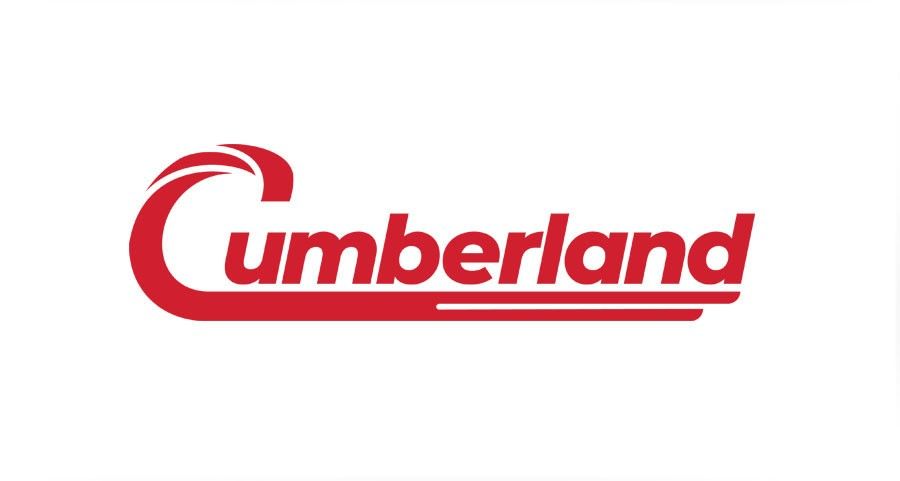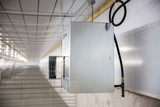How To Select The Right Heater For Your Barn
Feb 24, 2021
Across the country, winter brings with it harsh, cold winds and snow. For farmers and homesteaders, wintry conditions pose a significant risk to the health and safety of livestock.
Even if your farm has a barn that can provide shelter from winter weather conditions, cold ambient temperatures and drafts are still an issue. To maintain the optimal health of your livestock, you need proper heating for your barn.
However, heating barns has its own unique set of requirements and challenges. It’s important to fully consider the size, shape, and construction of your barn. Equally important is consideration for the safety of your animals.
In this article, we’ll share several tips and considerations you should take into account when selecting the right heater for your barn.
Determining How Much Heat You Need for Your Barn
Several factors are going to determine the size and type of heater that you’ll need for your barn. The first factor to consider is the health of your animals. Different livestock will require more or less heat.
Meeting the Heating Needs of Your Livestock
If your barn is used to keep livestock, the first thing that you want to consider is how much heat your animals need. Many livestock animals have a natural resistance to cold temperatures. In some cases, additional heat can be harmful for their health. Understanding the needs of your livestock will help determine how much heating your barn needs.
Large Livestock
Most large animals, like horses, cows, and pigs are well-equipped to handle colder temperatures. However, they have their limits. If you live in a region with temperatures regularly dropping “below freezing”, that is 32 degrees Fahrenheit or 0 degrees Celsius, then you might want to consider installing a barn heating system.
When heating a barn, keep in mind the ideal temperature range for your livestock. For example, the ideal ambient temperature for dairy and livestock cattle is generally considered 41 and 77 degrees Fahrenheit. So, raising your barns temperature by only 10 or 20 degrees may be sufficient.
Small Livestock
For smaller livestock, like chickens and other poultry, temperatures that regularly fall below 40 degrees Fahrenheit, or about 4.5 degrees Celsius, are a concern. You’ll also need to use a barn heater to increase heat for these animals.
Shop Farmer Boy’s selection of barn heaters
Other Livestock Considerations
Additionally, animals require different amounts of heat during different life stages. Most importantly, younger animals, like piglets and chicks, will require a higher and more consistent temperature than their adult counterparts. So, depending on the type of farm you operate, there may be additional heating factors to consider.
Once you’ve determined if you need to heat your barn, the next step is to choose the right sized heater. This is going to vary based on several factors, including the size of the building you’re heating.
Choosing the Right Heater For Your Barn Size
The size of the barn you’re heating is going to determine the size of the heater you’ll need. The first thing that you’ll need to do is determine the volume of your barn in cubic feet. Doing so requires measuring and multiplying the length, width, and height of your barn.
For example, if you have a barn that is 30’ wide by 40’ long and 10’ high, the calculation will look like this:
30 x 40 x 10 = 13,600
In this example, you know that you have a barn area equaling 13,600 cubic feet. Once you know this, the next step is to calculate how many BTUs you’ll need to heat that area.
Calculating BTUs per hour
BTU is an acronym for British Thermal Units. One BTU equals the amount of energy needed to increase the temperature of a pound of water by 1 degree Fahrenheit. In order to determine the BTU rating that you’ll need to heat your barn, you’ll can follow this formula:
(cubic feet of space) x (desired temperature change in Fahrenheit) x .133 = BTUs needed per hour.
Let’s use the previous barn size in another example. In this case, we’ll say it’s 35 degrees Fahrenheit outside, and you want the temperature of your barn to stay around 75 degrees. That’s a 40 degree difference. The formula would look like this:
13,600 x 40 x .133 = 72,352 BTUS per hour
That means you would need a heater rated at over 72,000 BTUs per hour in order to heat the barn. However, it’s important to understand that size isn’t the only consideration. You must also consider the building material and quality of the barn.
Barn Material & Quality
Alongside the size of the barn, the material that it’s constructed from, the amount and quality of insulation, and factors like the number of windows and doors will also affect how much, or how little, additional energy you’ll need to maintain a comfortable temperature.
One of the most important things that you can do is properly winterize your barn before the cold season moves in. This includes sealing cracks and replacing windows and doors to prevent drafts or the loss of heat. This can make heating your barn easier and less costly in the long run.
Deciding What Type of Heater Is Best for Your Barn
Once you’ve prepped your barn and determined the size of the heater you’ll need, it’s time to determine the type of heater you’ll want to use. There are two heating systems commonly used in barns: forced air and infrared.
Gas Forced Air Heaters
Forced air heating systems evenly disperse heat throughout a barn or other outbuilding. There are a number of different types of forced air systems, from larger mounted heaters used to provide air through duct work to smaller portable heaters used outdoors and indoors.
Forced air heaters operate a lot like home furnaces by blowing hot air over a broad area. This makes them an efficient way to heat large areas. Since they work by heating the air, their heating effects will last for a duration after they’ve been shut off. However, they do have two major drawbacks:
●Forced air heaters take time to raise the ambient temperature of an area, so they won’t provide instantaneous heat.
●Because they heat air, cracks, poor insulation, or faulty doors and windows will allow cooler air into the barn, forcing the warmer air up and out of the barn.
Forced air is not the only type of barn heater. Infrared heaters offer another heating solution.
Infrared Heating Systems
Unlike forced air heaters, which warm and circulate the air in a barn, infrared heaters work much like the sun. They heat up to very high temperatures and that heat naturally radiates to the environment around it. This provides several benefits:
●An almost instantaneous heating of an area
●The ability to accurately direct heat toward specific areas of the barn
●Less drying of the air making it easier to breath
●Radiant heat mimics the sun and can soothe livestock
While infrared heaters provide a number of benefits, they are not a perfect solution. They do have a few drawbacks.
Generally, infrared heaters are very safe. However, in order to radiate enough warmth, they must get very hot. Modern radiant heating systems have several measures in place to prevent burns or other heating accidents.
Perhaps the biggest downside to infrared heat is the increase in temperature stops when they are turned off. Unlike forced air systems, which have a lingering effect on ambient temperatures, once an infrared heater is turned off, it no longer produces heat. As a result, the ambient temperature quickly drops.
Deciding on An Energy Source
Whether you decide to install a forced air or an infrared heater, both will need a source of power to run. There are three options for powering your barn heating system:
●Electric
●Propane
●Natural Gas
Each has their own benefits and drawbacks.
Electric
Barn heaters that are powered by electricity will generally require less maintenance than a gas-powered heater. This is due to electric heaters lack of combustion and simpler design.
However, over the long-run, electric heating systems are more expensive than gas. Additionally, in areas with frequent power outages, electric heaters are not ideal.
Natural gas
Natural gas-powered heating systems are on average less expensive to run than electric powered heaters. There is also less of a concern of outages for areas with access to natural gas.
On the downside, gas powered heaters generally require more maintenance as a result of their combustion-based design.
Propane
When access to natural gas or electricity is limited, propane is another option. Propane offers many of the same benefits as natural gas but has the same limitations.
Find the Right Barn Heater at Farmer Boy
Whether you need a complete heating system or a simple portable heater, Farmer Boy sells barn heating options for any need. We carry gas forced air and radiant brooder heaters from trusted brands like L.B. White and Space-Ray.
If you’re planning a new barn build or a larger overhaul of an older barn, give our sales team a call at 1-800-845-3374. We’ll work with you to create a custom building supplies package.






